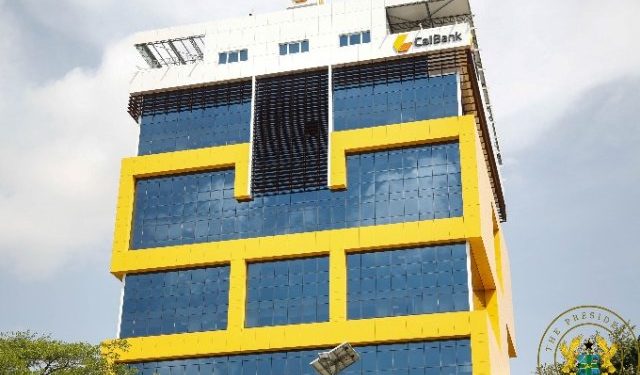CalBank’s Q1 Profits Offer Relief, But Capital Weakness Persists
CalBank Plc has posted a return to profitability for the first quarter of 2025, offering a glimmer of recovery amid lingering structural weaknesses. However, a closer look at the bank’s unaudited accounts reveals that the lender remains on a risky footing, with deep concerns about capital adequacy, asset quality, and regulatory breaches clouding its outlook.
For the three months ending March 31, CalBank recorded a profit before tax of GHS 64.8 million (GHS 77.9 million at the Bank level) and a profit after tax of GHS 35.6 million (GHS 50.7 million for the Bank), slightly ahead of the previous year’s performance. At a glance, the figures suggest progress. However, the underlying story reveals that the path to stability remains risky.
Despite the positive earnings headline, CalBank remains deeply non-compliant with regulatory capital standards. Its Capital Adequacy Ratio (CAR) remains negative at -7.1%, only a marginal improvement from -8.5% a year earlier. The Common Equity Tier 1 (CET1) ratio also sits at a troubling negative at –9.9%, while the leverage ratio is a stark negative at –6.0%. In a sector where prudential compliance underpins credibility and survival, these metrics are alarming.
Accounting Gains T
he bank’s return to profitability is, in part, cosmetic. A closer look at the results shows that net interest income plunged sharply, from GHS 122.8 million in Q1 2024 to just GHS 79.5 million this quarter. With core earnings under pressure, CalBank’s profit was boosted by non-recurring items such as a GHS 25 million dividend income and a GHS 24.9 million net impairment reversal.
Without these extraordinary inflows, the bottom line would have been considerably weaker. Furthermore, a GHS 31 million gain classified under “other income”, compared to just GHS 217,000 last year, suggests that operational earnings remain fragile and heavily reliant on non-core activities.
The persistent decline in lending income reflects a broader structural shift. CalBank’s loan book has shrunk from GHS 2.47 billion to GHS 2.22 billion, while its investment securities portfolio expanded massively from GHS 3.34 billion to over GHS 5.2 billion. The bank appears to be retreating from riskier lending activities towards the safer haven of government securities, a survival strategy but hardly a sustainable growth plan.
The Mountain of NPL
Perhaps most critical is the bank’s stubbornly high non-performing loan (NPL) ratio of 45.5%, unchanged from last year. This level of impaired assets, nearly half the loan portfolio, dwarfs the industry average and highlights severe weaknesses in credit risk management.
While the impairment reversal in Q1 helped earnings, it raises questions about prudence, given the scale of stressed assets. Without a radical clean-up of its balance sheet, CalBank’s future profitability will remain highly volatile and sensitive to even minor credit events.
Deposit Growth: A Fleeting Comfort?
One bright spot is the bank’s robust deposit mobilisation. Customer deposits rose 23% year-on-year to GHS 9.05 billion, providing critical funding stability. Borrowings also climbed to GHS 1.87 billion, giving CalBank additional liquidity buffers.
Regulatory Tightrope
The Bank of Ghana (BoG) has so far taken a cautious approach, deferring penalties for CalBank’s breaches of CAR, single obligor limits, and foreign exchange open position caps until the bank restores profitability and regulatory compliance.
This regulatory patience suggests recognition of CalBank’s systemic relevance, but it is not infinite. Should the bank fail to organically rebuild capital, it may face a forced merger, a mandatory recapitalisation programme, or a full supervisory intervention. Either outcome would have wider implications for Ghana’s banking sector stability.
Conclusion
CalBank’s Q1 2025 results are a microcosm of Ghana’s broader post-restructuring financial landscape: encouraging signs of resilience layered atop a foundation of unresolved vulnerabilities. The return to profitability is a welcome signal, but until capital and asset quality issues are decisively addressed, the bank remains close to a tipping point.
The coming quarters will reveal whether CalBank’s management can translate this fragile rebound into a genuine and sustainable recovery.








Thanks for the report about Cal Bank’s performance. I would be more than grateful if quarterly reports are made available to me. I am a depositor of the bank.
Thanks.